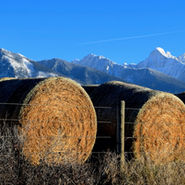

Harder Road - Calcrete Over pre-Wisconsin Flood Gravel
Harder Road Site. Harder Rd crosses the Cheney-Palouse scabland tract. This roadcut is mentioned in Baker (1973) and other articles on...


Hydraulic Fractures are Simple & Efficient
Left and middle: A synthetic hydraulic fracture produced in Jell-O using a stainless steel straw and colored syrup. Right: A natural one...


Clastic Dikes: The Tops
The tops of clastic dikes in the megaflood region appear five ways. 1.) Truncated by a bedding contact or an erosional surface 2.)...


Clastic Dikes: Sand Dikes Intruding Bedrock
Clastic Dikes in Miocene Basalt Sheeted dikes with sandy fills intrude downward into Miocene Columbia River Basalt in the Walla Walla...


Clastic Dikes in Eastern Washington: Formed by Lateral Spreading?
Lateral spreads. A network of lateral spread fractures in pavement formed by an earthquake. Peru 1970. USGS photo archive. Summary...


Clastic Dikes: Dispelling a Periglacial Origin
What Does Periglacial Mean? "Periglacial" is a term that packs a punch. Like "tundra" or "permafrost", it stands in for a full suite of...


Before Bretz
Reconnaissance Geologists of the Columbia Basin & Okanogan Highlands A significant number of geologists visited Eastern Washington prior...


Lind Coulee Fault near O'Sullivan Dam - Potholes Reservoir, WA
Any excusion into Lind Coulee will include some adventure. This outing involves recent faulting and interesting Plio-Pleistocene...










